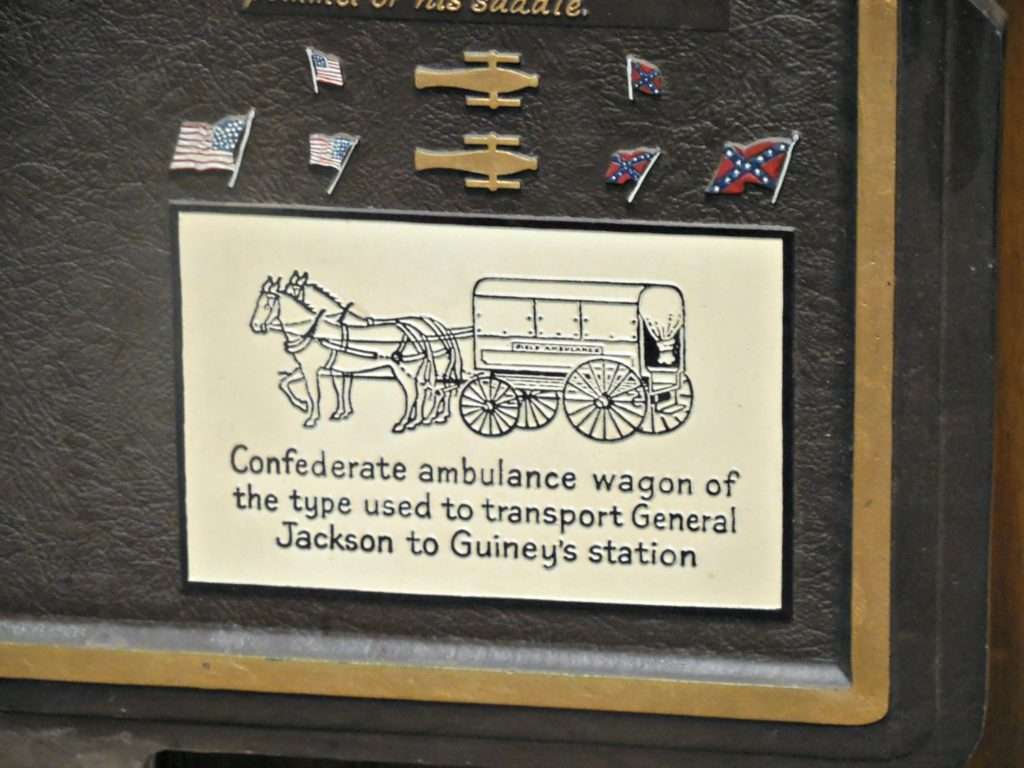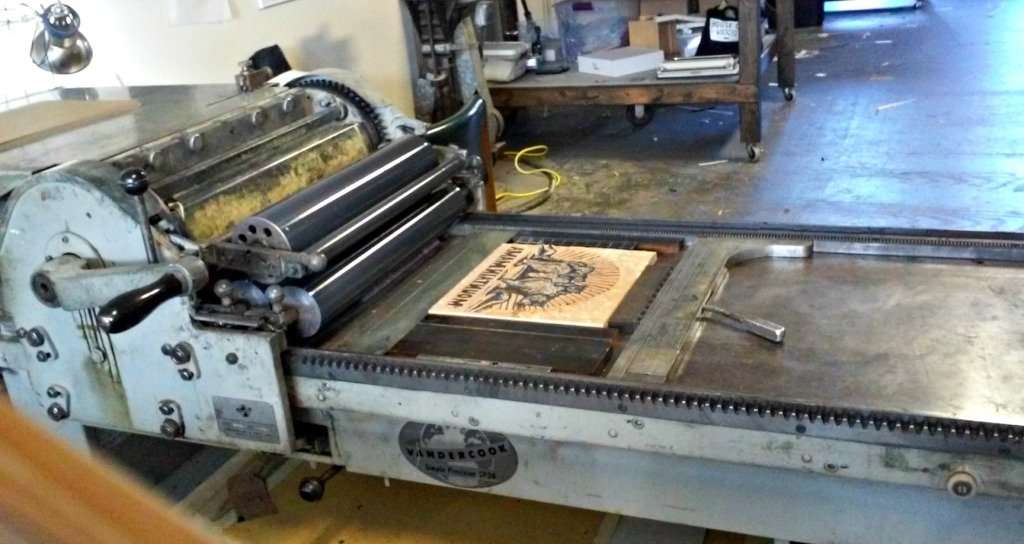Disclosure: I received tours to these places as part of a press tour to Marietta, Ohio. All opinions are honest, my own, and may differ from yours.
Sewah Studios
Have you ever heard of Sewah Studios? Probably not, but I’ll bet you’ve seen their work many times without even realizing it. How many times have you walked past a historical marker? Maybe you stop to read it if the subject interests you, or maybe you just walk on past. I know I’ve done both. Now that I’ve seen where these historical markers are made, I’m much more likely to actually read them!
Sewah historical markers can be found in each of the fifty states and in several foreign countries. When we include our sales to local historical societies and private organizations, we ship to more than 35 different states each year. The following states purchase their official state markers from us: Alabama, Arkansas, Connecticut, Kansas, Oklahoma, Vermont, New Hampshire, Delaware, Virginia, North Carolina, South Carolina, Florida, Mississippi, Louisiana, Tennessee, West Virginia, Ohio, Kentucky, Indiana, Wisconsin, Michigan, Minnesota, South Dakota, Wyoming, Missouri and Iowa.

Do you see that leather-like texture in the background of the marker? That is how you know it was made by Sewah Studios. Most of their markers don’t have the name Sewah on them, but if it’s got the leathery appearance, it’s theirs. They are the only historical marker makers who know how to make this texture in their cast aluminum markers. 75 percent of all cast aluminum markers are made by Sewah Studios.

Sewah Studios Historical Markers has been around since 1927 when E. M. Hawes founded the company. He named it after himself….Sewah is Hawes spelled backwards! Though the company is no longer owned by the Hawes family, the name has remained the same. The current owner’s family has owned Sewah since 1954. The current owner gave us the tour, and you can tell how proud he is of his business. That pride is well-deserved because the quality of work they do is a testament to the company.
Sewah Studios Tour
The tour of Sewah Studios was fascinating. We got to see a bit of all of the steps that go into making a Sewah Historical Marker.

The lettering process takes great care. There are special fonts and different sized letters from which people can choose when ordering their sign.


One the lettering is done, sand is packed into a mold and a whole lot of complicated stuff happens that I can’t even begin to explain! All I know is that it was so cool to watch.

They pack the sand so much that the sand is actually the mold for the marker! Nothing is wasted that way, and they can reuse the sand after it is cleaned again.

Watching them pour the aluminum was awesome! They use an aluminum alloy since 100% aluminum would be too soft to hold its shape. All of the aluminum that is overflow is sent to a recycling plant to purify it again.

After they clean all of the sand from the marker, it is a fresh, new marker. And really hot! The owner told us about how when he was a little boy he wanted to see one of the new markers which was up on a table. He put his fingers up on the marker, and you can guess what happened! He never did that again!

The marker is then cleaned up by chipping and sanding the freshly made sign until it is nice and smooth.

They’re taken to a special room where they are painted. The owner explained that they’re painted in such a way where less paint is wasted. It was really great to hear how much they are doing to reduce waste and reuse as much as possible.

Then the details are added by hand which takes a lot of practice!

Finally the markers are shipped off to where they are going. Now that you’ve learned how and where these historical markers are made, I’ll bet you’ll pay a little more attention to them! You can impress your friends too. If you see that leathery background, you know it’s from Sewah Studios.
Here are a couple of Sewah Studios Markers that I found around Marietta.


justAjar
Today, when you look at posters, you know that they were made by the thousands (or more) using the latest technology. They’re mass produced with nothing unique about them. That is not the way it used to be, and it’s not the way that Bobby and Sara Rosenstock make them now. They use old technology letterpress and woodcut techniques that make all of their designs unique.
You can tell by the way Bobby talks about his work that he truly loves what he does. That love shows through the amazing work justAjar produces. They do everything from web design and logos, to custom illustration, woodcuts and letterpress printing. The amount of work that goes into just one woodcut is astounding. I really loved learning about the process and seeing the old machines and letters used in the designing of justAjar’s work.



Follow Sewah Studios
Check out this YouTube video to see a bit about how the markers are made
Follow justAjar
I’ve never thought about how historical markers are made. I’ll definitely pay more attention to these markers now and I’ll check the background to see if it’s made by Sewah Studios. This is so neat!
I know! It was so cool! I usually just skim over them, but now that I know how much work goes into them, I’ll pay more attention.
Seen this signs all over the place but never knew how they were made or put together. Such a artist and craft needed to make these really pretty sign.
It was so fascinating!
I always wondered how they made those signs. This is incredibly interesting! I think I would be very interested in trying it myself.
It was very interesting to watch! A lot of work goes into them, that’s for sure.
I had never thought about how all these signs were made beforehand. It sounds like they really try to be eco-friendly!
Yes, they definitely do! The sand even comes right from the Ohio River banks!
That kind of tour is right up my alley! I love learning how things are made and learning about history.
You would definitely enjoy this then!
What a great time. You speak with such high regard for this place which means you really loved it. This is so nicely written. Thank you for sharing.
Thanks! It was so interesting!
Went to see a similar foundry workshop thing once in Montreal and it was fascinating. Good to see that some crafts live on and not everything is made up of plastic 🙂
Definitely! I love how environmentally friendly they are too.
Those signs are pretty incredible. I love the behind the scenes look in to how they make them. This is great.
Yeah they are so cool!
I love these historical markers! It was kind of fascinating to learn the background of the historical markers themselves.
I thought so too. It was really cool to see the work that goes into them.
It’s amazing! It’s awesome that you got the chance to see them in action while making the markers. You’ll always have a deeper appreciation for something once you’ve seen how it’s made. It definitely takes skills to make these beautiful markers.
It definitely does! Now I will be sure to pay a lot more attention to them.
I have always wondered how they make those markers. I thought they were chiseled or something, but now I know that it is a long and tedious process. I should pay more attention to historical markers from now on, knowing how much hard work has been done to make one.
I thought that too or that they were molded in a different way. I love that they use sand and can reuse it!
Wow, I find this process so interesting. I love taking tours like this, it is always fun to see how things are made and learn about the past. I never knew this is how markers are made.
Yes, it was so cool!
Wow, I never knew it was that tedious to do. I was fascinated on how it was being done. Indeed from now on, we will really pay attention to it.
There are so many steps in making them, that’s for sure!
It’s always amazing to see how things are made and this was especially interesting! I’ve never paid attention to historical markers before, but after reading this I definitely will from now on.
It really is! You never think about it until you see it!
Wow, this is very interesting! I had no idea this is how they make them. very cool
It was!
I have no idea about this. This is a nice post. Very informative.
Thanks!